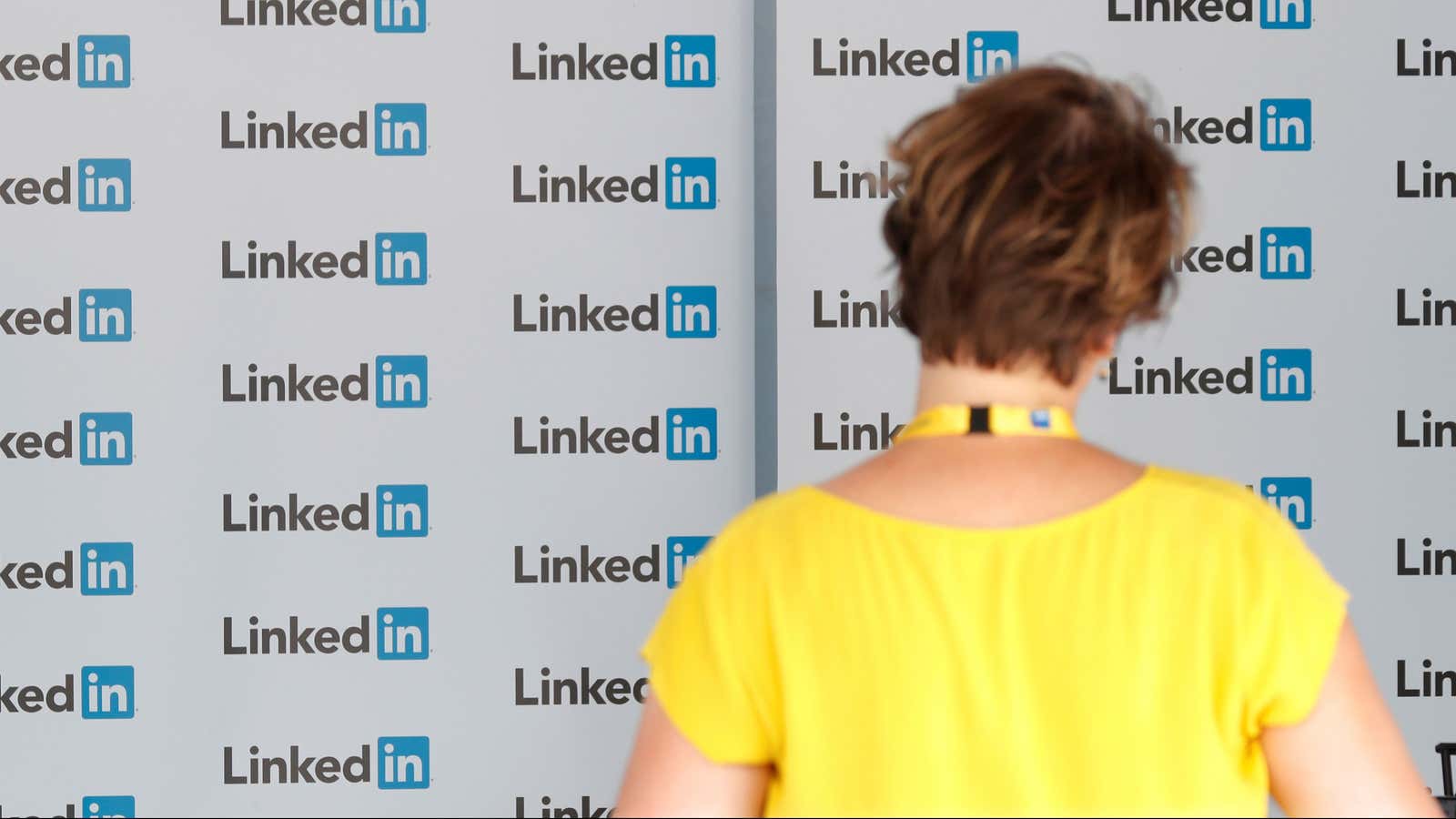Q: What should I say if I’m reaching out to someone I don’t know on LinkedIn?
Dear Social Networker,
Reaching out to prospective clients and colleagues online may seem like a friendly inquiry, but don’t approach networking online the same way that you would at a business or networking event.
While it’s important to present yourself as professionally as possible both online and at an in-person event—i.e. always use a professional-looking photo, skip the special characters or emojis, and don’t get clever with job descriptions (apologies, corporate “ninjas,” “wizards,” and “chief imagination officers”)—never forget that, because others are naturally on-guard against online spam, and are frequently bombarded with sales inquiries, it’s unlikely you’ll have time to chit-chat, make small talk, or beat around the bush. The key here is to be friendly, direct, and to the point.
Rather than dance around the subject, take a simple and straightforward approach: Quickly explain who you are, why you’re interested in making the person’s acquaintance, and what it is you’re hoping to achieve by connecting.
Notes don’t have to be eloquent, they just need to summarize answers to key questions that your recipient will have: Who is this person? Why should I take her call? How is her experience and what she’s offering relevant to my job and organization? Following a cheerful, positive greeting, within three grammatically correct (and spell-checked) sentences, explain the following:
- Who you are
- What you do for a living
- What your experience and background is
- Why you’d like to be connected with this person
- Which shared topics of opportunities of interest you’d like to explore
- How connecting can be of mutual benefit
- What you can do for him or her
For example: “Hi Jane—I’m Taylor Wexler, creative director for Rendetti Creative, which designs award-winning advertising and video campaigns for clients. I see your company is undergoing a major rebranding effort, and your recent promotional spots really do a great job of highlighting customer success stories. Are you by chance looking for advertising agencies to assist with creating other upcoming promotional campaigns? Either way, let’s stay in touch, as we’re always researching and writing about the topic at our website and can use input and feedback from industry experts such as yourself. It’d be great to connect, if you have a moment, and share tips and insights—thanks again!”
A few points to note as you go through the process:
- Also summarize answers to the questions above in your LinkedIn profile, which prospective contacts will inevitably review. The first sentence of your profile should always provide a quick snapshot that reinforces who you are and where your expertise lies.
- Keep a relevant article, video, or other piece of thought leadership that you’ve created as the most recent post that you’ve shared on the social network, to underscore your credibility. For example, I’ll routinely post videos of speeches and media appearances I’ve made as a trends expert so they’ll be among the first things spotted when others review my profile—and the first thing with which they identify me.
- Pay close attention to how electronic communications may be perceived. Tone of voice, expressions, and other subtle human nuances can be lost in the translation to digital.
- Maintain an online presence that’s respectful, professional, and courteous, noting that others may be able to see articles, comments, images, or videos that you’ve shared or commented on.
- Don’t be afraid to be yourself. Ensure your online brand reflects the same professionalism and personality that makes you so engaging and has gotten you this far in real life.
- Look for ways to create thought leadership and goodwill on LinkedIn by, for instance, contributing to online groups and communities. Making a positive impact is both personally rewarding and helps you generate a positive impression.
- Do your research: Understand the role, organization, and individual job responsibilities for the person who you’re contacting, and tailor messages to individuals, rather than sending a generic, one-size-fits-all note.
Likewise, don’t make the mistake of spamming others with queries the very minute that they’ve connected with you. And be cognizant of when you send requests: Prospects may be equally perturbed to receive requests on late nights or weekends as they would if they’d received them from a colleague or employer.
You’ll do fine as long as you remember these simple rules: Be succinct, be yourself, and give others good reason to make the connection.
Scott Steinberg is the author of The Business Etiquette Bible.
Do you have a workplace etiquette question? Submit to Scott by emailing work@qz.com.
